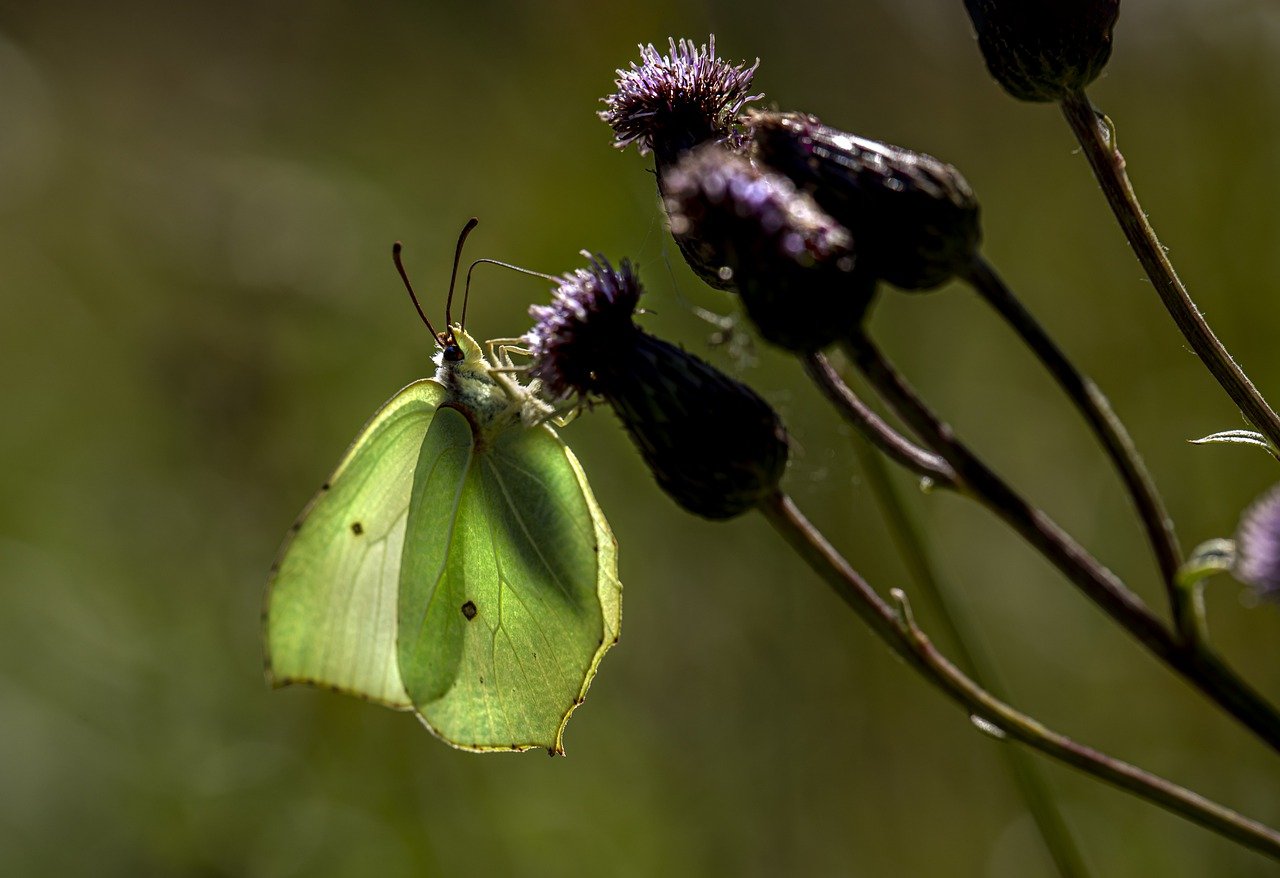The CommThe Common Brimstone (Gonepteryx rhamni) is a widespread and recognizable butterfly in Europe, known for its bright yellow coloration and early appearance in spring. It is often considered one of the first butterflies to be seen each year, and its distinct wing shape and color make it a favorite among butterfly enthusiasts.
Description
- Size:
- The wingspan of the Common Brimstone ranges from 55 to 60 millimeters.
- Appearance:
- Males: Males are bright lemon-yellow with a slight greenish tint, making them highly visible in their natural habitats.
- Females: Females are much paler, often appearing whitish or pale green, which provides them with excellent camouflage against foliage.
- Wings: The wings are triangular with a distinct point on each, resembling a leaf when at rest. This shape, combined with the leaf-like venation, helps the butterfly blend into its surroundings.
- Underwing: The underside of the wings is duller, with a more pronounced greenish tone, further aiding in camouflage when the butterfly is at rest.
Behavior and Ecology
- Habitat:
- The Common Brimstone is found in a wide range of habitats, including woodlands, gardens, meadows, and hedgerows. It prefers areas with abundant nectar sources and the presence of its larval host plants.
- Flight:
- This butterfly is a strong and fast flier, often seen fluttering low to the ground in search of nectar or suitable egg-laying sites. It is active from early spring through late autumn.
- Diet:
- Adults: The adult butterflies feed on nectar from a variety of flowers, including thistles, knapweed, and buddleia. They have a long proboscis that allows them to reach deep into flowers.
- Larvae: The caterpillars feed on the leaves of buckthorn (Rhamnus) and alder buckthorn (Frangula alnus), which are essential for their development.
Lifecycle
- Eggs:
- Females lay eggs singly on the leaves of the host plants. The eggs are small, oval, and pale green, blending well with the foliage.
- Caterpillars:
- The caterpillars are green with a white stripe running along each side, providing excellent camouflage among the leaves. They feed on the leaves of the host plants, growing steadily until they are ready to pupate.
- Pupae:
- The pupae, or chrysalises, are also well-camouflaged, resembling a small leaf or twig. The pupal stage lasts for a few weeks before the adult butterfly emerges.
- Adults:
- The adult butterflies emerge in late summer and early autumn. After feeding and mating, they go into hibernation, often taking shelter in dense vegetation, hollow trees, or even garden sheds. They can survive through the winter and are among the first butterflies to be seen in spring.
Ecological Role
- Pollination:
- As adults, Common Brimstones play an important role in pollination, visiting a variety of flowers to feed on nectar and inadvertently transferring pollen between plants.
- Food Source:
- The larvae are a food source for various predators, including birds and insects. Their presence in the ecosystem contributes to the overall food web.
Conservation Status
- Distribution:
- The Common Brimstone is widespread across Europe, North Africa, and parts of Asia. It is one of the most common and familiar butterflies in its range.
- Conservation:
- This species is not currently considered at risk, largely due to its adaptability and the widespread availability of its larval host plants. However, habitat destruction and the use of pesticides can locally impact populations.
Summary
The Common Brimstone (Gonepteryx rhamni) is a resilient and widespread butterfly known for its bright yellow coloration and early emergence in spring. Found in a variety of habitats, it plays a key role in pollination and contributes to the biodiversity of its ecosystem. With its distinctive wing shape and color, the Common Brimstone is a well-loved species among nature enthusiasts and serves as an important indicator of the health of its environment.
Views: 1276
Subscribe to the newsletter:
